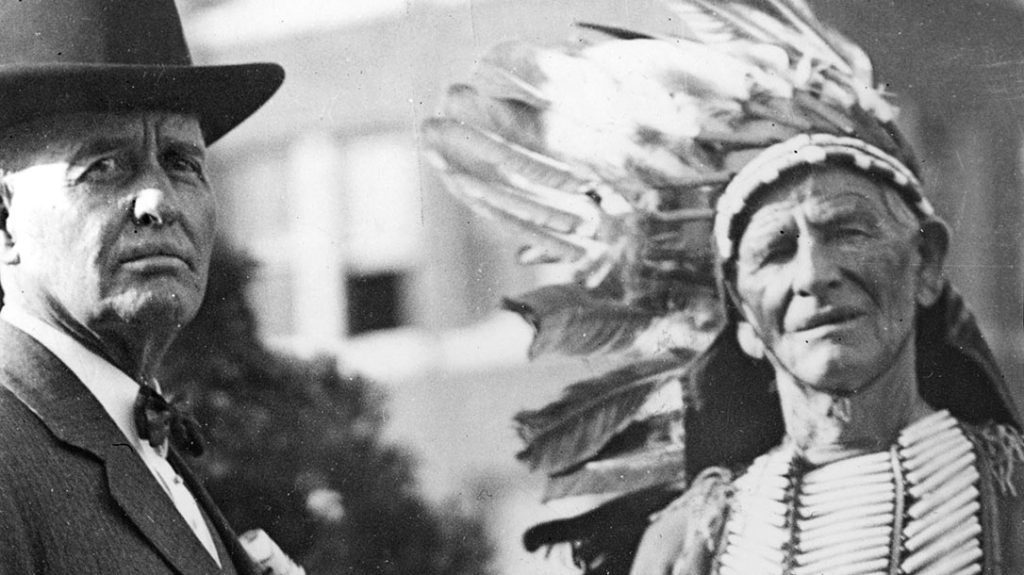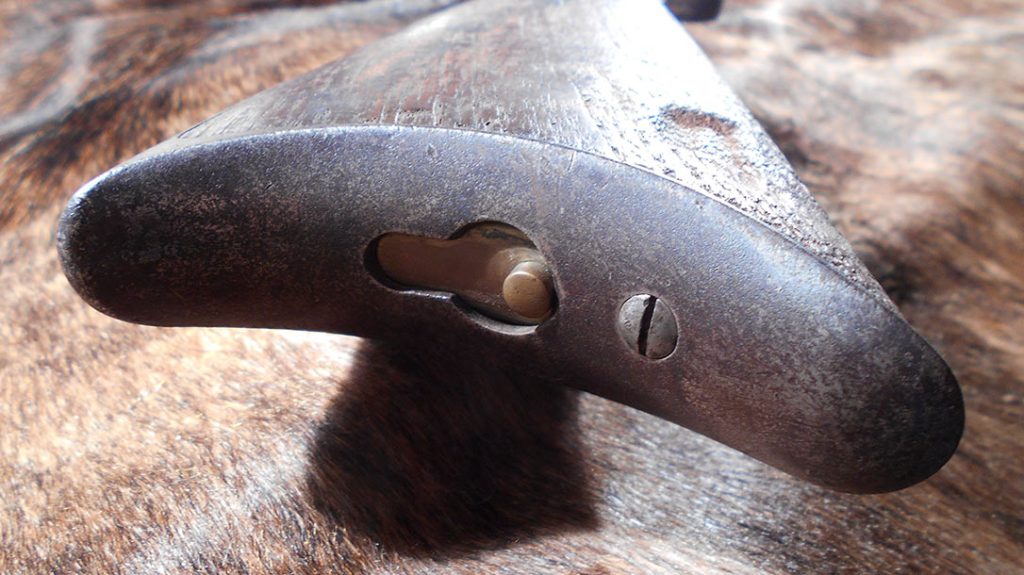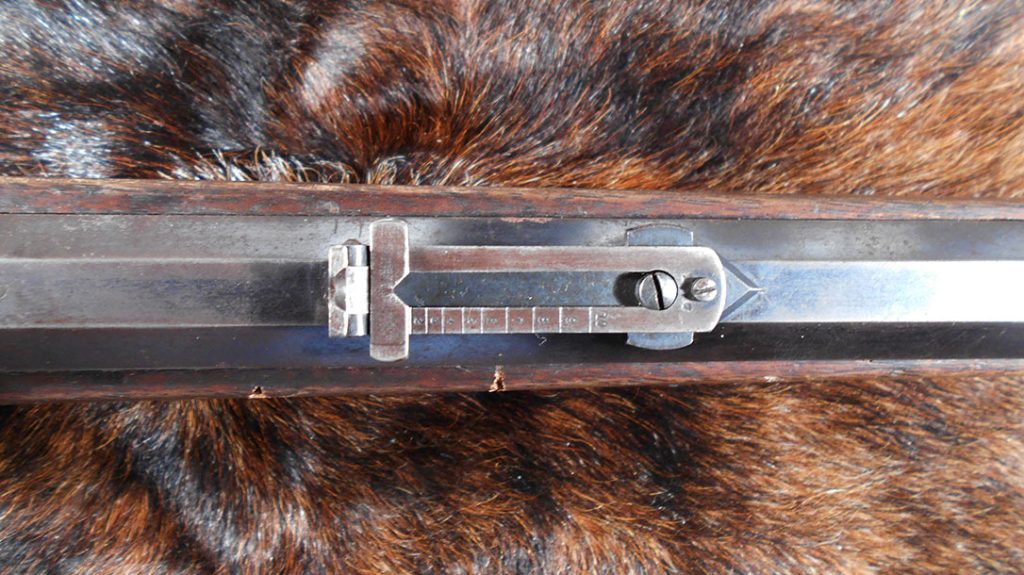
1876 Winchester: The Rifle of Texas Ranger James B. Gillett

James Buchanan Gillett was born November 4, 1856, in Austin, Texas. Ever the adventure seeker, young Gillett started riding horseback at an early age. He eventually set himself up in the business of fishing and hunting along the Colorado River. He would sell his harvests in town. One of his earliest firearms was a Confederate soldier’s old Enfield musket from the Civil War. He bought it for $3.50; in Gillett’s words, it would “kick like a mule.” He would eventually turn to the 1876 Winchester.
Life Before the 1876 Winchester
He later earned enough from his fish and game harvesting business to plunk down $12 for a nondescript double-barrel shotgun. He promptly used it to shoot quail, ducks, and various small game. Gillett’s first trip to the frontier came about in the spring of 1871. This is when he accompanied his father to Brown County, Texas, to receive a herd of cattle.
The young man was hooked. He had to see the untamed frontier, and by 1873 he took on the adventurous life of a cowboy. Roaming the vast countryside and punching cattle got the boy to the frontier, but he sought even more action.
Then, in the spring of 1875, Texas Ranger Captain Dan Roberts announced that he would enlist 20 good men into his Texas Ranger company to bring it up to strength. Jim Gillett was determined to become one of them and did just that.
The Frontier Battalion
“We live in the saddle and the sky is our roof,” was an old Ranger saying. Gillett found this to be perfectly true, which suited him just fine. His skills as an outdoorsman and a cowboy, combined with his love for wild places and zest for adventure, made the Ranger lifestyle seem as though it had been written exclusively for him.
In reading Gillett’s book Six Years with the Texas Rangers: 1875–1881, it is quite obvious he loved the lifestyle. In it, along with the excitement of fighting Indians and outlaws, Gillett describes details of the Texas Rangers’ long horseback patrols through rugged country, much of which I am familiar with.
One excerpt describes an Indian camp that was discovered abandoned at the confluence of Independence Creek and the Pecos River. It is rugged and beautiful country where my family and I vacation once or twice a year at a place now known as Chandler Ranch.
In his six years serving in the Frontier Battalion, Gillett participated in numerous scouting missions into untamed Texas. This is where they battled marauding Indians and dangerous outlaws, even pursuing both into Old Mexico.
The First Indian Fight
His first Indian fight involved a band of Lipan Apaches who had been stealing horses. The Rangers took up their trail and followed the raiders until finally catching up to them. A running fight then ensued.
Gillett, fulfilling his boyhood dream of being a Texas Ranger and fighting Indians, used his .50-caliber Sharps carbine to shoot a horse out from under two braves riding double.
When the horse dropped, one Indian warrior took off on foot. The other was left behind, pinned under the dead mount. Gillett mounted his horse and gave chase, but noticed in passing that the pinned “Indian” was undeniably a white boy. He and another Ranger chased the running warrior and the other Ranger killed him.
Returning to the dead horse, they found that the “Indian” had freed himself and disappeared. Many years later, it was learned that the captive-turned-warrior was Herman Lehman, who published an autobiography in 1927. The book was Nine Years Among the Indians, 1870–1879: The Story of the Captivity and Life of a Texan Among the Indians.

Life in the Frontier Battalion was not limited to Indian fighting—the times and the Texas Rangers’ requirements were changing. More and more, they evolved into a mounted state police force, arresting outlaws, murderers and cattle thieves.
During his tenure with the Texas Rangers, Gillett served under leaders of notoriety such as D.W. Roberts, N.O. Reynolds and George W. Baylor. He speaks well of these men, and it seems they equally admired him.
Other Adventures
Upon an honorable discharge from the Texas Rangers, Gillett continued enforcing the law and now worked for higher pay. First, at the job of the captain of the armed guards on the Santa Fe Railroad. Then as assistant city marshal in El Paso, Texas, under the famed shootist, City Marshal Dallas Stoudenmire.
Gillett became the city marshal when Stoudenmire resigned and accepted the United States deputy marshal position.
Gillett notes that the two got along well, even though Stoudenmire was inclined to drink too much and get rowdy. A mark of Jim Gillett’s professionalism and code of honor was put to the test one night when he “corralled” his ex-boss and an ex-deputy with his double-barreled shotgun.
He stopped them before the intoxicated duo had a chance to shoot one another in the Acme Saloon. Both were fined $25, and Stoudenmire was placed under $250 bond to keep the peace.
While serving as city marshal, Gillett entered into the cattle business in Presidio County. It was here he was later offered a job managing a large cattle outfit. He resigned from his city marshal’s position in 1885 and managed the Estado Land and Cattle Company for six years. He grew their herd from 6,000 to 30,000 head.
During that time, he had maintained his own cattle operation and devoted his time to it after leaving his position at Estado. Not quite finished with law enforcement, Gillett was also sheriff of the largest county in Texas, Brewster County, from 1890 to 1892. He passed away in 1937 at 80 years old.
Winchester 1876 Sporting Rifle
The focus gun of this story is the Winchester 1876 Sporting Rifle, reportedly owned by Gillett. June of 1922 found the lawman-turned-rancher in his mid-60s residing at his Barrel Springs Ranch. The ranch lies in the foothills of the beautiful Davis Mountains west of Marfa, Texas.
On the 10th day of that month, he took time to document the history of his beloved 1873 Winchester, which he carried during his six years in the famed Frontier Battalion of the Texas Rangers. He also documented his hunting knife and Indian paraphernalia.
The big ’76 is not mentioned in this informative letter. So, we can only assume it was possibly used in later law enforcement and/or for hunting. If a similar letter exists documenting the history of this particular rifle, I have not yet located it.
The 1876 is a beefed-up version of the Winchester 1873 and was developed to provide a platform for more powerful, long-range cartridges. Considering Gillett’s great affection for his 1873 carbine, it makes perfect sense that he would own such a gun. This hefty ’76 sporting rifle is complete with a heavy, 28-inch octagonal barrel and crescent butt. The buttplate features a neat small storage compartment for extra rounds or a screw-together cleaning rod.
The rifle’s steel wears an ancient, overall patina and appears to have been well used but not abused. The wooden stock and forend are time-darkened and scarred with signs of heavy use. Specifically, the kind one would expect for a rifle that was most likely transported exclusively via horseback in a leather saddle scabbard.
The blade front sight is accompanied by a ladder rear sight designed to rainbow big slugs on target out on yon hillside.
Feeding the 1876 Winchester
The .45-60 Winchester cartridge was one of several designed for the 1876 Winchester and came about in 1879. Winchester produced the old cartridge until 1935, even though the model 1876 was discontinued around 1897.
The .45-60 fired a 300-grain lead bullet at around 1,300 feet per second. In his good book, Shooting Lever Guns of the Old West, Mike Venturino states that the 1899 Winchester catalog lists the factory load as 62 grains of black powder under a 300-grain flat-nose bullet of 1/16 tin-to-lead temper.
This article was originally published in the Guns of the Old West Winter 2022 issue. Subscription is available in print and digital editions at OutdoorGroupStore.com. Or call 1-800-284-5668, or email subscriptions@athlonmediagroup.com.



